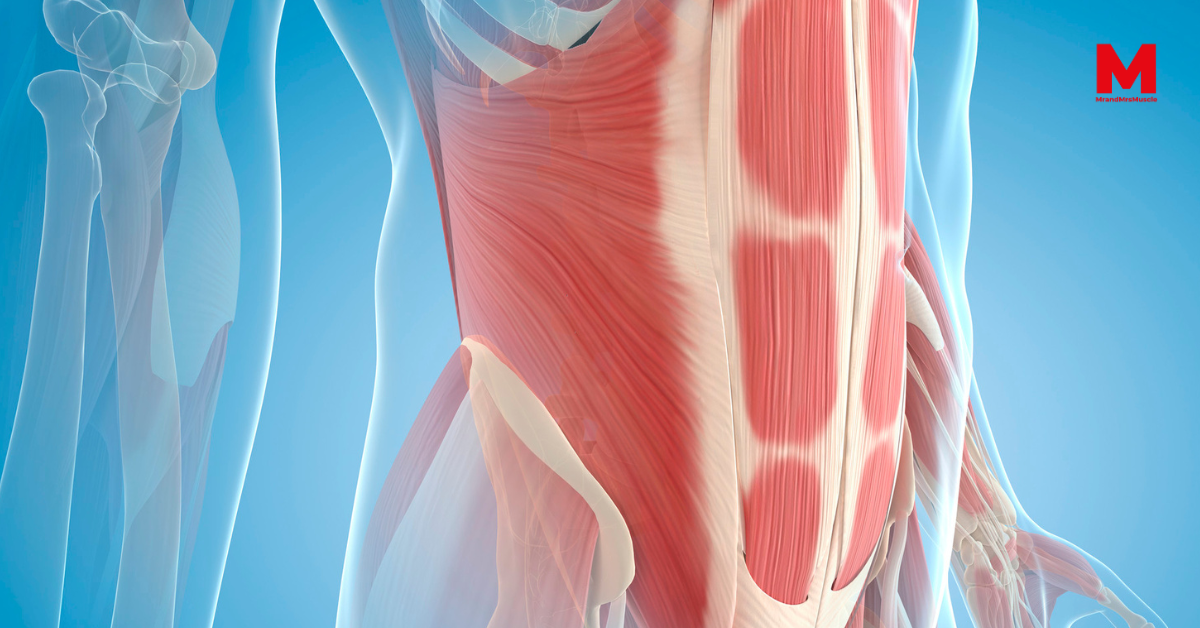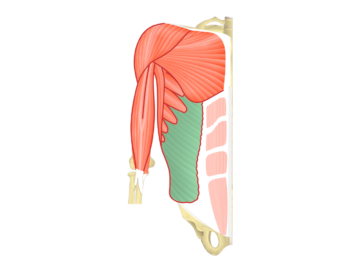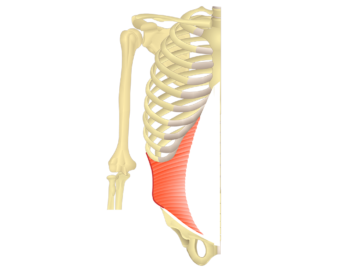Abdominal Muscles
The muscles in the abdominal region form the abdominal wall, which is divided into two parts: the anterolateral (front & side) and the posterior wall (back).
There are five sets of muscles in the front part of the abdominal wall, arranged from shallow to deep:
- The rectus abdominis muscle
- The external abdominal oblique muscle
- The internal abdominal oblique muscle
- The transverse abdominis muscle
- The pyramidalis muscle (present in 80% of individuals)
The back part of the abdominal wall consists of only three components:
- The quadratus lumborum muscle
- The iliopsoas muscles (composed of the iliacus and psoas major muscles)
- The psoas minor muscle
The rest of the posterior abdominal wall is supported by the muscles of the back.
All of these muscles work in pairs and can contract either on one side of the body (unilateral contraction) or on both sides (bilateral contraction). Bilateral contraction helps to stabilize the torso and increase internal abdominal pressure, while unilateral movement allows for bending and rotating of the trunk. Additionally, these muscles play a significant role in breathing, balance, supporting the overall physical well-being of the body, as well as bowel and bladder control.
To learn more about the functions of the abdominal muscles, click on a muscle below:
The rectus abdominis muscle, commonly known as the “six-pack,” is a paired, long, and flat muscle located in the front of the abdomen.
The external oblique is a muscle located on the sides of the abdomen. It runs diagonally, extending from the lower ribs to the pelvis. Its main function is to allow the rotation and bending of the trunk, providing support and stability to the core during various movements.
The internal oblique is a muscle located beneath the external oblique on the sides of the abdomen. It runs diagonally in the opposite direction, extending from the lower back and iliac crest to the lower ribs. Its main function is to assist in trunk rotation and lateral flexion, working together with the external oblique to provide core stability and support during movements.
The transversus abdominis is a muscle located deep within the abdomen. It runs horizontally, wrapping around the sides and front of the abdomen. Its primary function is to provide core stability and support by compressing the abdominal contents and maintaining internal abdominal pressure during various movements, such as breathing, coughing, and lifting.
Iliopsoas Muscle

The iliopsoas muscle is a combination of two muscles, the iliacus and psoas major, which work together as a single functional unit. It is located in the hip region and plays a crucial role in hip flexion, allowing you to lift your knee towards your chest. Additionally, the iliopsoas muscle contributes to stabilizing the spine and plays a role in maintaining proper posture and balance.
The quadratus lumborum is a muscle located in the lower back on both sides of the spine. It plays a key role in stabilizing the lower back and is involved in lateral flexion, allowing you to bend sideways. The quadratus lumborum also assists in posture and supports various movements such as standing, walking, and sitting.






